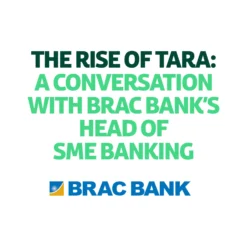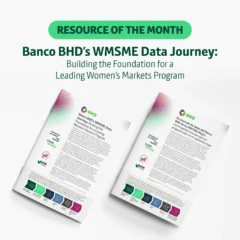Despite compelling evidence that organizations with gender-diverse leadership teams are more likely to outperform financially, it may take until 2031 for the share of women holding C-suite roles in financial institutions globally to reach just 25 percent, according to a 2023 global assessment by Deloitte.
What’s more, the study shows without stronger interventions by leadership teams, the progress in the share of women in executive ranks is likely to stagnate or reverse.
This challenge was at the heart of conversations at the September 2025 meeting of the Alliance’s Employee Value Proposition Taskforce. Participants heard from experts representing three Alliance members – Australia’s Westpac, Africa’s Standard Bank, and Bangladesh’s City Bank – who shared strategies used by their organizations to successfully build the pipeline of talented women leaders.
Start Early in the Talent Pipeline
Jessica Freer, Executive Manager of Diversity, Equity and Inclusion at Westpac, emphasized the importance of intervening “as early as possible”. To do so, the bank introduced ‘Step Up’, a program to support early- to mid-career women to build visibility, exposure and confidence to navigate the leadership ladder, and leverages its 6,000-member Women’s Employee Resource Group to create peer connections and mentorship at scale.
Use Data to Drive Accountability
Anusha Padiachy, Head of Human Capital for Personal and Private Banking, Africa Regions and Offshore, at Standard Bank, highlighted the role of data in systematically driving inclusivity across the bank’s 20-country footprint. Standard Bank uses scorecards at business unit levels to hold leaders accountable, tracking hiring, promotions and exits disaggregated by gender. Like profit and loss targets, these gender scorecards directly impact staff remuneration.
Similarly, when Westpac set a goal for 50 percent of its leadership to be women (achieved in 2017), the bank established a baseline of how many women were entering, exiting and rising across the group, created a robust dashboard for measuring progress, and assigned bespoke gender diversity targets to each business unit.
Focus on Outcomes in Key Areas (Hiring, Development, Retention)
Sanjoy Kumar Das, Head of Organization Development & HR Strategy for City Bank PLC in Bangladesh, where the supply of women candidates is often limited due to social norms, said a comprehensive approach is taken to achieve greater representation of women at all levels. This includes preferencing a female candidate for recruitment out of university if she has the same qualifications as a male candidate; ensuring women make up at least 30 percent of management development program participants versus the 18-20 percent general workforce representation; and offering a range of retention policies that address common barriers such as six months paid parental leave with no promotion discrimination.
Freer shared that Westpac recognized the need to be more ‘outcome’ focused on its women’s leadership programs, and introduced three simple metrics to measure success:
- Progression: Percentage of participants moving to new or expanded roles within 12 months
- Retention: Keeping talent engaged and growing
- Experience: Program Net Promoter Score to understand participant satisfaction
To drive these outcomes, Westpac created ‘Illuminate’, a program where every general manager personally sponsors a woman from their division. This intentional approach has delivered concrete results: close to 40 percent of the initial cohort moved into new or expanded roles within 12 months.
Address Cultural Challenges
The City Bank’s experience highlighted cultural challenges in Bangladesh: convincing families that company daycare is as reliable as relatives, and addressing cultural preferences where male colleagues find it difficult to report to female managers. Their solutions include counseling family members and working consistently to change organizational culture.
In the Australian context, Freer identified three critical barriers: outdated paradigms that expect women to take on the brunt of childcare responsibilities; the unconscious bias that favors masculine leadership traits––especially in times of economic/business downturns; and the race for AI talent favoring domain expertise over potential which favors male candidates.
These challenges underscore the need to continue focusing on traditional inclusive policies like flexible parental leave, while also navigating new challenges.
Combination of tactics required
The experiences shared by the experts show that progress in growing the share of women in leadership in the finance industry requires a combination of data driven analysis and performance measurement, systemic actions and bold initiatives to remove barriers.
Success in building a gender-diverse C-suite will also likely generate the proven “multiplier effect”: for each C-suite woman added, many more appear in senior leadership levels just below.
And the best place to start? Freer’s advice is simple: “Pick one barrier and work on it.”
To hear future conversations like this, Alliance members should join the Employee Value Proposition Task Force. Email Karyl.Akilian@FinancialAllianceforWomen.org to sign up for the next session on November 20 focusing on managing multigenerational workforces.


